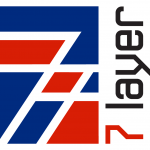Delving deep into Data ‘Black Hole’ requires a Powerful Spotlight
As Central Banks develop their thinking and understanding around the creation of Data Strategies in which large amounts of banknote data are translated into meaningful information, experienced software development firm 7 Layer says important insights are available with the right approach.
The banknote equipment environment can appear daunting. Mixed fleets of machines collecting data at an enormous rate, each storing the data in different locations, formats and versions and over many years, can start to look overwhelming.
“This infamous data “black hole”, just like light into an actual black hole, takes data in but emits nothing. To extract that data and uncover insights from it is a matter of applying the right technology, and with NoteChain® we now have the software to start exploring massive amounts of data quickly and efficiently,” says Phil Ball, Technical Director at 7 Layer and an expert in data analytics when applied to the cash logistics industry.
“Defining what the Bank needs from the data and, therefore, defining the questions to be answered, is the key to translating data into meaningful information,” says Mr. Ball. “Once it is clear what information the Bank is specifically seeking, we are in a position to use the advanced tools that are now available to us to process this data at an enormous scale.”
Identifying the questions that need to be answered ultimately leads to evidence-based decision making. It is the basis of a Data Strategy, which becomes the blueprint for the approach a Bank takes to drive improvements in all aspects of its currency management program.
“To create the information needed to give Central Banks full command over their currency management system, reading banknote serial numbers is key. Once we can track an individual banknote, we can connect it to all its sensor data. We can then make sense of literally billions of data points across a currency system,” says Mr. Ball.
“Besides answering the right questions, powerful data analytic software can also uncover hidden patterns, unknown correlations, trends, previously unobserved customer behaviours and other useful information.”
NoteChain® is designed to do exactly this. Sensor data (with serial numbers) is collected from a wide and varied range of machines in different formats, it is cleansed and de-duplicated, then run through a series of customised algorithms that translate this raw data into the requested information in the form of a customer-defined dashboard.
The visualisations are carefully designed to be straightforward and easy to understand. They are developed to answer specific questions relevant to currency management including optimising demand and supply, the specification of the banknote and the performance of the banknote in circulation.
Says Mr. Ball, “Another issue is to unearth so-called good data which is considered to be not only consistent, but sufficient to answer the right questions and efficient to gather.”
In applying NoteChain® to a currency system, besides ensuring that the Bank owns the data itself, the practicalities of setting up the right approach to access and bring together good data depend on a number of factors, including:
- how many physical sites are part of the network
- the mix of banknote equipment being used
- third parties who are handling the banknotes at different points in the system, and
- understanding any Notes Held to Order used
NoteChain® is the world’s only data analytic platform designed specifically for end-to-end currency management. It provides accurate, bespoke banknote currency performance insights that can only be accessed via the computational power of this data analytic solution.
For more information contact:
Tracy Kennish-Ward,
Head of Marketing & Business Development
tracy.kennish@7layer.net


Comments are closed.